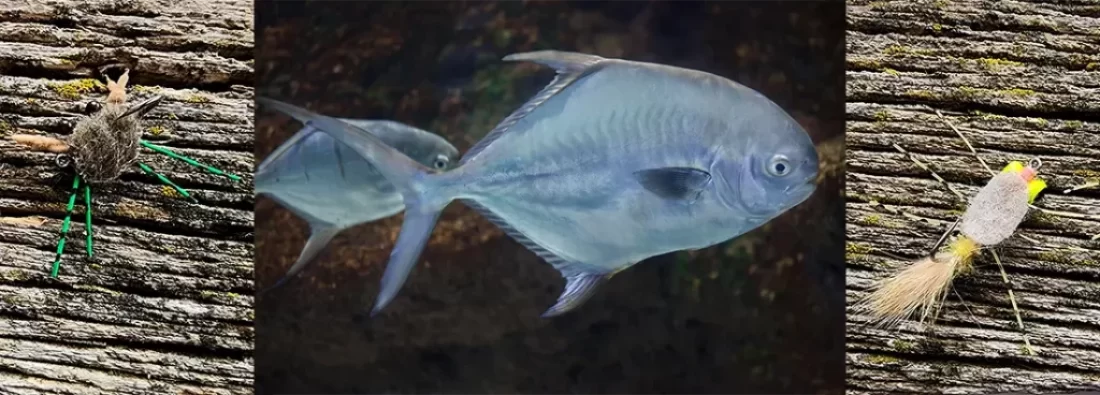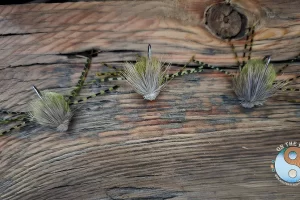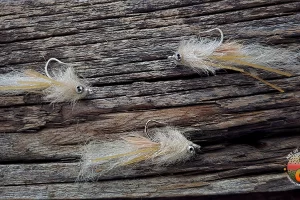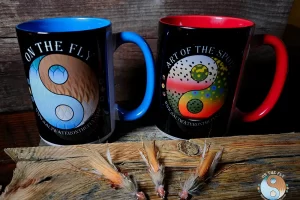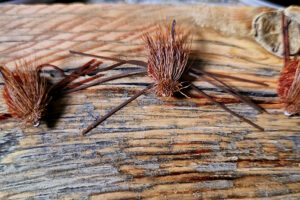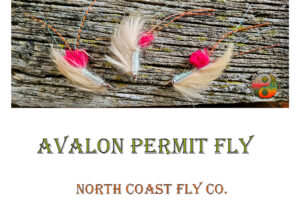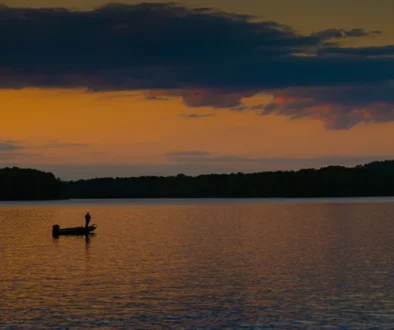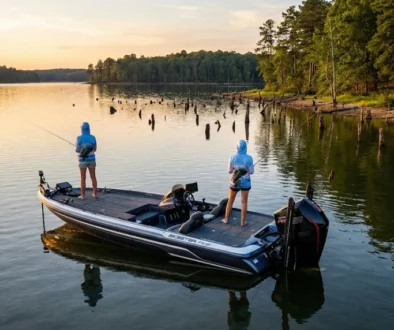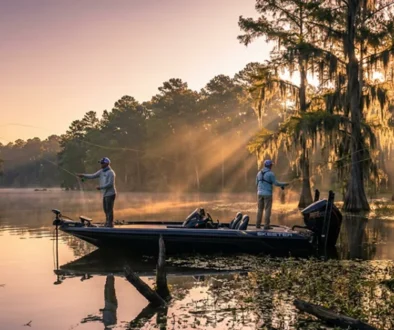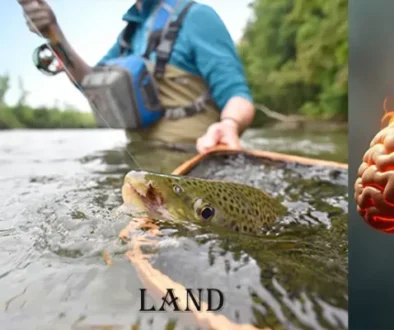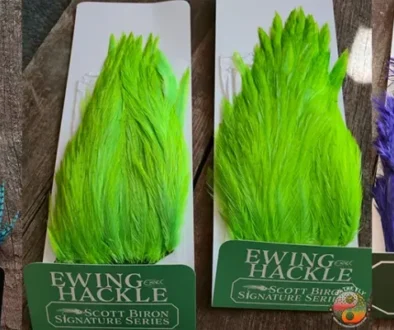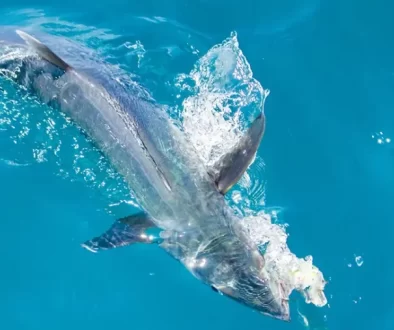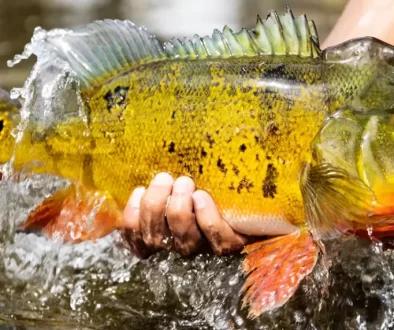Permit fishing demands patience and precision. Top 20 Permit Flies help you in choosing the right fly rod, fly reels, fly lines, and especially the right fly significantly boosts your success. As Permit are notoriously picky. A diverse fly selection is essential.
This guide explores the Top 20 Permit Flies, sharing insights into their design, effectiveness, gleaned from years on the flats. We’ll also cover regional variations and scenarios where specific flies excel. This deep dive into the best permit flies will prep you for your next saltwater fly fishing adventure.
But Really Folks, Fly fishing for permit is an obsession for many saltwater anglers. These elusive fish are notoriously picky, so choosing the right fly is crucial. This isn’t just about having a fly that resembles a crab or shrimp. It’s about understanding permit behavior and selecting a fly that triggers their feeding instincts. We’ll explore research, examine patterns among the top 20 permit flies, and equip you with the knowledge to choose wisely. I’ve fished throughout the Caribbean and witnessed the power of a well-made, correct pattern. You’ll learn from my experiences in these saltwater destinations.
Table of Contents
Cracking the Code: Top 20 Permit Flies
Permit are notoriously selective eaters. This makes choosing the best fly absolutely vital for fly fishing. No single fly guarantees a catch, but some patterns consistently perform well. Consider these top permit flies for your fly boxes.
Classic Crab Imitations
Crabs are a cornerstone of a permit’s diet. Flies like the Raghead Crab and the Merkin Crab are mainstays of the Top 20 Permit Flies in the saltwater fly box.
These patterns imitate crabs’ natural movement and look, attracting even the most discerning permit.
The simply designed Raghead Crab is a classic. The Merkin Crab’s versatility extends to bonefish and tarpon. The Kung Fu Crab blends aspects of both, offering another trigger.
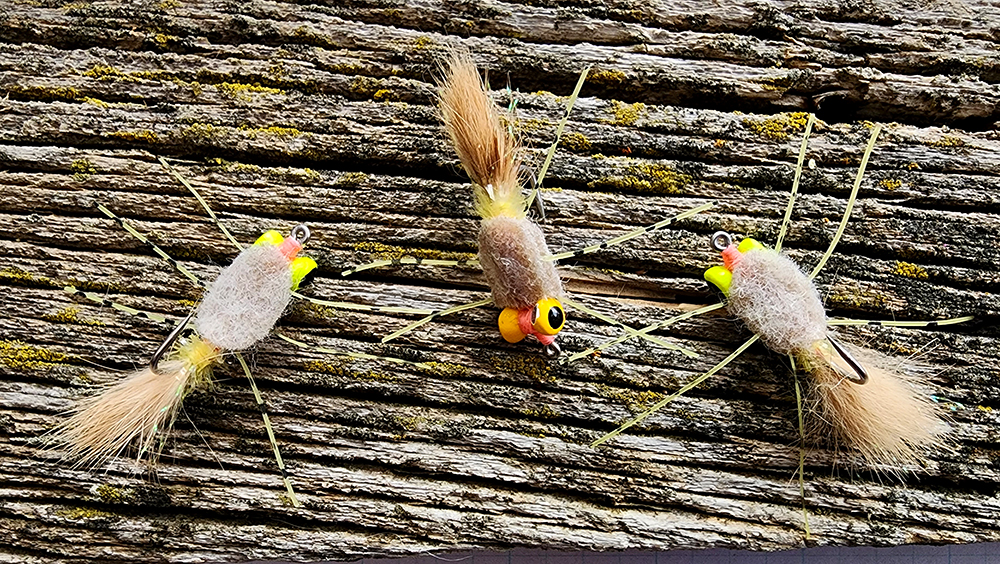
Tan Raghead Crab
Crabs are a versatile saltwater fly fishing pattern, Crabs have you got some.

Permit Graphic Hoodie UPF-50 Sun Protection
Graphic Hoodies design for that perfect day on the flats. UPF-50 sun protection, sewn in facemask to protect from wind and sun. Permit Graphic Hoodie.
Merkin Crab Tying Instructions and How to Fish
The Merkin Crab is a popular fly pattern used to catch permit, bonefish, and tarpon in saltwater fisheries. It’s a versatile fly that can be tied in various sizes and colors to imitate different types of crabs. Here’s a step-by-step guide on how to tie and fish the Merkin Crab:
Tying Instructions
Materials:
- Hook: Partridge or equivalent, size 2 to 6
- Thread: White or cream-colored 3/0 or 6/0
- Body: Cream-colored or tan dubbing
- Eyes: Black or red glass beads or mono eyes
- Tail: White or cream-colored marabou feathers
- Legs: Brown or tan mono or rubber legs
- Claws: Brown or tan mono or rubber claws
- Weight: Lead or tungsten bead eyes (optional)
Step-by-Step Instructions:
Step 1: Prepare the Hook
- Start by attaching the thread to the hook and wrapping it around the hook shank to create a small thread base.
Step 2: Create the Body
- Take a small amount of dubbing and wrap it around the thread base to create the body of the crab. Make sure to leave enough room at the front of the hook for the eyes and claws.
Step 3: Add the Eyes
- Use a pair of glass beads or mono eyes and attach them to the front of the hook using a small amount of thread. Make sure they are evenly spaced and secure.
Step 4: Add the Tail
- Take a few marabou feathers and tie them in at the back of the hook, just above the bend. This will create the tail of the crab.
Step 5: Add the Legs
- Cut a few pieces of mono or rubber legs to the desired length and tie them in at the sides of the body, just behind the eyes. Make sure they are evenly spaced and secure.
Step 6: Add the Claws
- Cut a few pieces of mono or rubber claws to the desired length and tie them in at the front of the hook, just below the eyes. Make sure they are evenly spaced and secure.
Step 7: Add Weight (Optional)
- If you want to add weight to your Merkin Crab, you can use lead or tungsten bead eyes. Simply attach them to the front of the hook using a small amount of thread.
Step 8: Finish the Fly
- Use a whip finish to secure the thread and trim the excess. Your Merkin Crab is now complete!
Tips and Variations:
- Use different colors and materials to create different variations of the Merkin Crab.
- Experiment with different weights and sizes to see what works best for your fishing situation.
- Add a small amount of flash or reflective material to the body of the crab to give it a more realistic appearance.
- Use a dubbed body with a more realistic crab shape to create a more lifelike fly.
Conclusion:
The Merkin Crab is a versatile and effective fly that can be used to catch a variety of species. including permit, bonefish, and tarpon. With these step-by-step instructions, you should to be able to tie your own Merkin Crab and start catching fish! I consider it a must have in every size from #1 to #6 and even a few 8’s.
How to Fish the Merkin Crab
The Merkin Crab is a highly effective fly for catching permit, bonefish, and tarpon in saltwater fisheries. Here are some tips on how to fish the Merkin Crab:
Choosing the Right Location:
- Look for areas with shallow water, typically 1-3 feet deep, with a sandy or weedy bottom.
- Permit and bonefish often feed in areas with a mix of sand and weed, while tarpon prefer areas with more structure.
- Pay attention to tidal movements and fish during the changing tides, as this can trigger feeding activity.
Presentation:
- Cast the Merkin Crab into the desired location, allowing it to sink to the bottom.
- Use a slow, gentle retrieve, imitating a crab moving across the bottom.
- Vary the speed and direction of the retrieve to match the natural movement of a crab.
- Be prepared for a strike at any moment, as permit and bonefish can be aggressive feeders.
Stripping Techniques:
- Slow Strip: Use a slow, steady strip to imitate a crab moving across the bottom.
- Fast Strip: Use a fast, aggressive strip to imitate a fleeing crab.
- Pause Strip: Strip the fly quickly, then pause for a few seconds to allow the fly to settle.
- Hop Strip: Strip the fly quickly, then hop it forward to imitate a crab jumping across the bottom.
Fishing Tips:
- Pay Attention to Your Leader: Use a long, thin leader to present the fly naturally and reduce the risk of spooking the fish.
- Vary Your Fly Size: Use different sizes of Merkin Crabs to match the size of the crabs in the area you’re fishing.
- Fish the Edges: Fish the edges of the flats, where the water is slightly deeper and the fish are more likely to be feeding.
- Be Patient: Permit and bonefish can be finicky feeders, so be prepared to wait for a strike.
Common Mistakes:
- Moving the Fly Too Fast: Permit and bonefish are not aggressive predators and may not chase a fly that’s moving too quickly.
- Not Varying the Retrieve: Using the same retrieve every time can become predictable and may not trigger a strike.
- Not Paying Attention to the Bottom: Failing to notice changes in the bottom contour or structure can result in missed opportunities.
Raghead Crab Fly Pattern
The Raghead Crab is a popular fly pattern used to catch permit, bonefish, and tarpon in saltwater fisheries. It’s a versatile fly that can be tied in various sizes and colors to imitate different types of crabs. Here’s a detailed description of the Raghead Crab fly pattern:
Origin:
The Raghead Crab was originally designed by legendary fly tyer and saltwater angler, Bob Clouser. Clouser created the pattern to imitate the common blue crab found in the Caribbean and Gulf of Mexico.
Fishing Tips:
- Fish the Raghead Crab in shallow water, typically 1-3 feet deep, with a sandy or weedy bottom.
- Use a slow, gentle retrieve to imitate a crab moving across the bottom.
- Vary the speed and direction of the retrieve to match the natural movement of a crab.
- Be prepared for a strike at any moment, as permit can be aggressive.
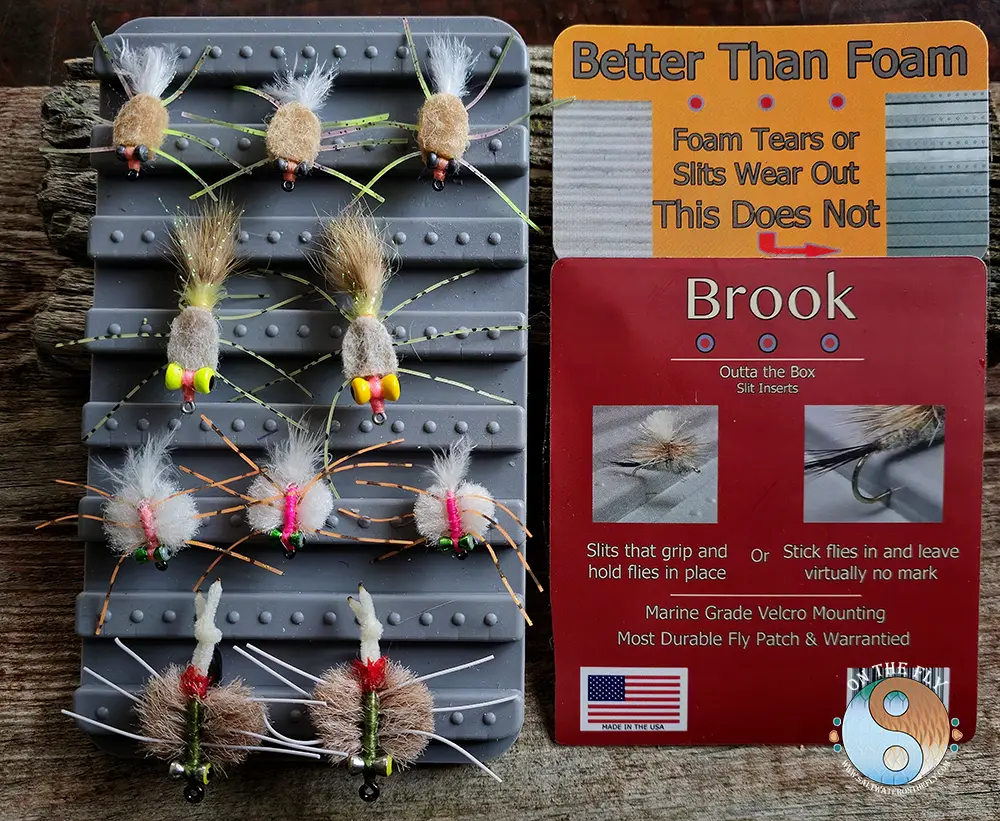
Crabs on Outta Box Pad
Del Brown Permit Fly
The Del Brown Permit Fly is a legendary fly pattern designed by the renowned saltwater angler and fly tyer, Del Brown. It’s a highly effective fly for catching permit, a species known for its finicky feeding habits and strong fighting ability.
History:
Del Brown, a pioneer in saltwater fly fishing, developed the Del Brown Permit Fly in the 1980s. He designed the fly to imitate the small crabs and shrimp that permit feed on in the Caribbean and Gulf of Mexico. The fly’s unique design and realistic appearance have made it a favorite among permit anglers.
Fishing Tips:
- Fish the Del Brown Permit Fly in shallow water, typically 1-3 feet deep, with a sandy or weedy bottom.
- Use a slow, gentle retrieve to imitate a crab moving across the bottom.
- Vary the speed and direction of the retrieve to match the natural movement of a crab.
- Be prepared for a strike at any moment, as permit can be aggressive feeders.
Perez Crab Fly Pattern
The Perez Crab is a popular fly pattern used to catch permit, bonefish, and tarpon in saltwater fisheries. It’s a versatile fly that can be tied in various sizes and colors to imitate different types of crabs. Here’s a detailed description of the Perez Crab fly pattern:
Origin:
The Perez Crab was originally designed by saltwater angler and fly tyer, Enrique Perez. Perez, a renowned guide in the Caribbean, created the pattern to imitate the common blue crab found in the region.
Fishing Tips:
- Fish the Perez Crab in shallow water, typically 1-3 feet deep, with a sandy or weedy bottom.
- Use a slow, gentle retrieve to imitate a crab moving across the bottom.
- Vary the speed and direction of the retrieve to match the natural movement of a crab.
- Be prepared for a strike at any moment, as permit and bonefish can be aggressive feeders.
Conclusion:
The Perez Crab is a highly effective fly pattern for catching permit. Its unique design and realistic appearance make it a favorite among saltwater anglers. With these step-by-step instructions, you can tie your own Perez Crab and start catching fish!
Flexo Crab Olive: A Weedless Crab Fly Pattern
The Flexo Crab Olive is a popular fly pattern used to catch permit, bonefish, and tarpon in saltwater fisheries. Its unique weedless design makes it an ideal choice for fishing in areas with heavy vegetation or structure.
Fishing Tips:
- Fish the Flexo Crab Olive in shallow water, typically 1-3 feet deep, with a sandy or weedy bottom.
- Use a slow, gentle retrieve to imitate a crab moving across the bottom.
- Vary the speed and direction of the retrieve to match the natural movement of a crab.
- Be prepared for a strike at any moment, as permit and bonefish can be aggressive feeders.
Conclusion:
The Flexo Crab Olive is a highly effective fly pattern for catching permit in areas with heavy vegetation or structure. Its unique weedless design makes it an ideal choice for fishing in these conditions. !
Surf Candy
The Surf Candy is a popular fly pattern used to catch permit in saltwater fisheries. Its sweet-tasting flavor and irresistible movement make it a favorite among saltwater anglers.
Surf Candy is very effective fly pattern for catching permit. Its sweet-tasting flavor and irresistible movement make it a favorite among saltwater species.
Kung Fu Crab
The Kung Fu Crab is a popular fly pattern used to catch permit. Its unique design and realistic appearance make it a favorite among saltwater anglers. It’s a fly that combines the best of the Raghead and Merkin crabs.
Bite-Me Baitfish Fly Pattern
The Bite-Me Baitfish is a popular fly pattern used to catch permit, bonefish, and tarpon in saltwater fisheries. Its wounded baitfish design and irresistible movement make it a favorite among saltwater anglers.
Tying Instructions:
Materials:
- Hook: Partridge Sea Streamer or equivalent, size 2 to 6
- Thread: Semperfli White or silver 3/0 or 6/0
- Body: White or silver dubbing
- Eyes: Black or red glass beads or mono eyes
- Tail: White or silver marabou feathers
- Dorsal Fin: White or silver dubbing
- Belly: White or silver dubbing
- Weight: Lead or tungsten bead eyes (optional)
- Bite-Me Body: White or silver Bite-Me material
Step-by-Step Instructions:
Step 1: Prepare the Hook
- Start by attaching the thread to the hook and wrapping it around the hook shank to create a small thread base.
Step 2: Create the Body
- Take a small amount of dubbing and wrap it around the thread base to create the body of the baitfish. Make sure to leave enough room at the front of the hook for the eyes and dorsal fin.
Step 3: Add the Eyes
- Use a pair of glass beads or mono eyes and attach them to the front of the hook using a small amount of thread. Make sure they are evenly spaced and secure.
Step 4: Add the Tail
- Take a few marabou feathers and tie them in at the back of the hook, just above the bend. This will create the tail of the baitfish.
Step 5: Add the Dorsal Fin
- Cut a small piece of dubbing and shape it into a dorsal fin. Attach it to the top of the body using a small amount of thread.
Step 6: Add the Belly
- Cut a small piece of dubbing and shape it into a belly. Attach it to the bottom of the body using a small amount of thread.
Step 7: Add the Bite-Me Body
- Cut a piece of Bite-Me material to the desired length and wrap it around the body of the baitfish. This will create the wounded baitfish design and irresistible movement of the fly.
Step 8: Finish the Fly
- Use a whip finish to secure the thread and trim the excess. Your Bite-Me Baitfish is now complete!
Fishing Tips:
- Fish the Bite-Me Baitfish in shallow water, typically 1-3 feet deep, with a sandy or weedy bottom.
- Use a slow, gentle retrieve to imitate a wounded baitfish.
- Vary the speed and direction of the retrieve to match the natural movement of a baitfish.
Crabs and Shrimp Patterns for Permit Fly Fishing
- Olive Turneffe Olive Crab
- Rock Crab
- Mantis Shrimp
- Evolution Shrimp
- Tan Turneffe Crab
Alphonse Crab
Permit are notoriously picky. But the Alphonse crab fly has earned its place among the top permit flies. This fly consistently tricks these finicky fish. It’s a simple pattern. But its effectiveness lies in its realistic look. It perfectly mimics small crabs permit love to eat.
The Alphonse crab’s design is pretty smart. It features lead eyes. These help it sink quickly. This is key for getting down to where permit feed. The body is typically tan or light brown. This matches the natural color of many crabs. The legs are made of rubber or soft plastic. They create a lifelike movement in the water.
Here’s a closer look at what makes the Alphonse crab so effective:
- Weight: The lead eyes give the fly enough weight to get down quickly. This is important in areas with strong currents or deeper water.
- Color: The natural tan or light brown color of the fly imitates the color of many crabs. This makes it look like a real meal to permit.
- Movement: The rubber or soft plastic legs create a lifelike movement in the water. This helps to attract the attention of permit.
- Durability: The Alphonse crab is tied with strong materials. This helps it withstand the sharp teeth and powerful jaws of permit.
When fishing with the Alphonse crab, a slow retrieve often works best. Short strips can also be effective. This imitates the natural movement of a crab. This fly can be used in a variety of saltwater environments. It’s especially effective in shallow flats and turtle grass areas. Many experienced permit fishermen consider the Alphonse crab a must-have in their fly box. This fly is definitely worth a try if you’re serious about catching permit.
Colby’s Tequila Twister Crab
Permit fishing is tough. But landing one on the fly is something special. It’s something every saltwater fly fisherman wants to do. That’s why picking the right fly is so important. The Colby’s Tequila Twister Crab is one you should know.
This fly is a cool twist on some classic permit patterns. It borrows a bit from the Raghead Crab and the Merkin. But the Tequila Twister adds some flash. This gets a permit’s attention in the shallows. It also uses a rubber leg design. This adds some extra movement in the water.
Think about this. A permit is cruising the flats. It’s looking for a tasty crab. Then it spots a flash of color. The rubber legs of the Tequila Twister are waving back and forth. It looks like a real crab scurrying along the bottom. This can trigger a permit to eat. Even a picky permit.
So, how do you fish the Colby’s Tequila Twister? A slow retrieve is usually best. Short strips with pauses. This mimics a crab’s natural movement. This can make even a wary permit think it’s the real deal.
This fly also sinks well. This makes it great for targeting permit in deeper water. This is because it gets down to where the permit are feeding. A lot of crab patterns ride high in the water column. This makes them harder for permit to see.
One important tip is to vary your retrieve. Sometimes, a faster retrieve can work. This imitates a fleeing crab. This can get a reaction strike from a following permit. You can even let the fly sit still on the bottom for a few seconds. Then give it a little twitch. This can also entice a strike.
Remember, the key to catching permit on the fly is presentation. The right fly helps, but you have to get it in front of the fish. You have to make it look natural. The Colby’s Tequila Twister Crab helps you do that.
Avalon Keel Shrimp
The Avalon Keel Shrimp permit fly is a bit different. It’s meant to look like a mantis shrimp. But it’s also got that keel. This keel is like a weighted underside. It helps the fly flip over and land right-side up. This is important because permit are picky. They like their meals presented just so. They’ll often ignore a fly if it’s not sitting right.
This fly was made by Enrico Puglisi. He is a well-known fly tier. He designed this fly with permit in mind. It’s got a realistic look. It also has great movement in the water. This is because of the materials. It uses a blend of EP fibers and sili-legs. These materials move a lot like a real shrimp.
This fly is a good choice for permit fishing because it imitates their natural prey. Permit love to eat shrimp and crabs. Mantis shrimp are no exception. The Avalon Keel Shrimp looks a lot like these tasty snacks. So it’s a natural choice when trying to fool a permit.
Also, the Avalon Keel Shrimp sinks at just the right speed. It gets down to where the permit are feeding. But it doesn’t sink too fast. This lets you keep it in the strike zone longer. This is really important. Permit can be spooky. You want your fly to look as natural as possible. A fly sinking too quickly might scare them off. This slow sink also helps keep the fly from getting snagged on the bottom.
The colors of the Avalon Keel Shrimp are important too. They are chosen to match the natural colors of mantis shrimp. This makes the fly even more appealing to permit. Some popular colors are olive, tan, and brown. But don’t be afraid to try other colors! Sometimes a brighter color can attract a permit’s attention.
So, if you are planning a permit fishing trip, think about adding the Avalon Keel Shrimp to your fly box. It’s a proven pattern. It just might be the key to hooking your next big permit.
Top 20 Permit Flies: Essential Patterns
Permit have exceptional eyesight, making fly choice absolutely crucial. These fish scrutinize presentations carefully, so select flies designed with precision and accuracy. I’ve fished Texas on saltwater flats trips,. I’ve noticed Anglers often arrive with the top permit flies they found without understanding presentation.
Crabs: Cornerstone of Permit Fly Boxes
Crabs are a major part of a permit’s diet. Crab patterns are essential permit flies. The Flexo Crab Olive, with its weedless design, is ideal for fishing near heavy structure or grassy flats. The EP Crab, created by Enrico Puglisi (EP Flies), the Alphlexo crab, and the Raghead Crab (small crab), are favorites among serious anglers.
Permit flies require precise imitations. Variations in size, color, and weight allow anglers to fine-tune these flies to mimic local crab species. Smaller versions, like the Micro Crab, might trigger larger takes. Small crabs can entice larger specimens.
Shrimp: Permit’s Tasty Treat
Shrimp, vital in the permit’s food chain, have inspired their own tempting flies. The Avalon Keel Shrimp, with its weighted keel, rides hook-point up, minimizing snags. A jig-style shrimp would get frustrating after one snag on an expensive fly fishing setup with custom fly reels, rods, fly lines, and reels.
Flies like the Spawning Shrimp or EP Spawning Shrimp imitate crustacean movements. Spawning shrimp (ep spawning) release chemical scents that attract smaller crabs. Some anglers carry weighted and unweighted versions to cater to different depths and retrieves (ep spawning shrimp).
The Ghost Shrimp mimics small crustaceans, a welcome change from the Bahamas Shrimp. Sometimes larger flies intimidate smaller permit. Some even use a baby Alphonse Crab.
Other Small Baitfish: Beyond the Crustacean Menu
Permit sometimes stray from their usual crustacean diet. Flies such as the Permit Pupil, a baitfish imitation, or the Borski Bonefish Bitter provide diversity. While there are specific peacock bass flies and bonefish/tarpon flies, top permit flies usually imitate shrimp or small crabs. Many articles cover bonefish and tarpon flies (including those for redfish and tarpon). These can also catch permit. Bonefish flies, saltwater flies, bass flies, dry flies, and soft hackle flies can all
Top 20 Permit Flies by Location
A successful fly in one location might not work in another. Matching your fly to the environment is important. Carry a fly box with various permit flies in case the preferences change. While fly fishing in Mexico’s Ascension Bay, I noticed similarities to Christmas Island.
Belize
In Belize, anglers prefer smaller flies like the olive Bauer crabs (sizes 4 and 6). The Raghead Crab remains a reliable choice, along with the Avalon Permit Fly / Crab in various colors. Consider these Belize favorites for your wading boot needs.
Florida Keys
The Florida Keys’ Fly Fishing in clear, shallow water allows permit to inspect every fly. Ensure small flies are weed-free, as floating grass can snag and spook fish. Use proven flies on quality hooks, like the Merkin crab. Florida Keys has great fly fishing and history. History of Florida Keys. Surf saltwater fly fishing in Florida State Parks can be rewarding and fun.
Cuba
When permit aren’t focused on shrimp and crabs, you have to adapt. Target fish eating small freshwater fly, saltwater streamers, or soft hackles.
Borski Bonefish Bitter
Permit are picky. But this fly has a cool trick. It works for bonefish and permit. This makes the Borski Bonefish Bitter a great choice. It’s a good one to have if you’re going after both. This fly is especially helpful if you’re on a flats fishing trip.
Bob Borski created this fly. He designed it with bonefish in mind. But permit seem to love it too. It’s like a little snack they can’t resist. The Borski Bonefish Bitter has a simple design. This helps it look like a natural food source.
This fly uses a combination of materials. It often includes craft fur and rubber legs. These materials give the fly lifelike movement in the water. The materials also help attract permit. The fly’s colors can vary. But they usually imitate small crabs or shrimp. These are common prey for permit.
When fishing this fly, a slow retrieve is often best. Short strips can also be effective. This mimics the movement of a small crab or shrimp. This can trigger a permit strike. It’s important to present the fly naturally. You also want to make sure it lands softly. Permit are easily spooked. A clumsy presentation can ruin your chances.
The Borski Bonefish Bitter is a versatile fly. It’s a good choice for anglers of all skill levels. Whether you’re a seasoned permit fisherman or a beginner, this fly is worth a try. It’s especially helpful for those targeting both bonefish and permit. This can simplify your fly selection.
Golden Mantis Shrimp
This fly mimics a mantis shrimp. Permit love to munch on these little critters. So, it makes sense to use a fly that looks just like them. This fly is especially good in shallow, clear water where permit can easily spot it.
Although the Golden Mantis Shrimp is a bit more complex to tie than some other permit flies, it’s worth the effort. The segmented body and realistic legs give it a lifelike action in the water. This fly can also be effective for bonefish, so it’s a good one to have in your box if you’re targeting both species. The Golden Mantis Shrimp is often tied with a weed guard. This helps keep it from getting snagged on the bottom in grassy areas. This is where permit like to hang out.
The Golden Mantis Shrimp is a great choice if you are fishing in areas with lots of turtle grass. It is designed to push through the grass without hanging up. The coloration and flash are often just enough to get a permit’s attention.
If you are looking for an alternative to crab patterns, this is a great option. The Golden Mantis Shrimp has enough weight to get down in the water column. This makes it an excellent choice for those slightly deeper flats. It is designed to be fished slowly. This allows permit to get a good look at it and decide it is something they want to eat. But you can also add some quick strips. This mimics the shrimp’s fleeing action, which can trigger an aggressive strike.
Ghost Shrimp
Permit love to eat crabs. But sometimes, they like a little variety in their meals. That’s where the Ghost Shrimp fly comes in. This fly mimics a small, translucent shrimp. It’s often tied on a jig hook so it rides hook point up. This helps it avoid getting snagged on the bottom. Plus, it makes it look like a real shrimp scooting along the sandy flats.
The Ghost Shrimp is usually tied with a mix of natural and synthetic materials. This gives it a lifelike look that permit find hard to resist. It is a great pattern for when permit are being picky. Sometimes they will completely ignore crab patterns. But, they often can’t turn down a tasty Ghost Shrimp.
One of the keys to fishing a Ghost Shrimp is the retrieve. Short, quick strips work best. This imitates the darting movement of a real shrimp trying to escape. Remember, permit are smart fish. A realistic presentation is important. This will increase your chances of hooking up.
So, next time you’re chasing permit, don’t forget the Ghost Shrimp. This simple but effective fly might just be the ticket to your next trophy fish. It’s a great addition to any saltwater fly box.
Bahamas Shrimp
Permit love shrimp. This is especially true in the Bahamas. The flats are crawling with all kinds of tasty crustaceans. These make a great meal for a hungry permit. So a shrimp fly is often the best way to catch this fish. But there are lots of shrimp patterns out there. Which ones should you have in your fly box?
One great option is the Merkin Crab. Although it has “crab” in the name, it works well for permit. It also works for bonefish and tarpon. This makes it a versatile fly to have. Another good choice is the Schmitters Crab. This is an old standby. It has been catching permit for decades. It still works today.
If you want something a bit different, try the Golden Mantis Shrimp. This fly looks like a mantis shrimp. Permit love to eat mantis shrimp. This fly can be very effective. Another option is the Snapping Shrimp. This fly imitates a snapping shrimp. These are common prey for permit. The Fleeing Shrimp is also a good bet. It imitates a shrimp trying to get away. This can trigger a permit’s predatory instincts.
Some shrimp patterns are more specialized. The Simpson’s Crab is one example. This fly has a proven track record for catching permit. Another is Fazon’s Crab. This fly has been tweaked and tuned for maximum effectiveness. The Slipstream Crab is a fast-sinking fly. This helps it get down to the permit quickly.
A few shrimp flies imitate other creatures. The Bite-Me Baitfish looks like a wounded baitfish. This can be irresistible to permit. The Megalops imitates a small fish. The Permit Pupil also looks like a small fish. But it has a pupil-like eye that can attract permit.
Don’t forget about the classics. The Raghead Crab is a staple in many saltwater fly boxes. The Del Brown Permit Fly is named after a legendary permit fisherman. Del Brown knows how to catch permit! His fly is a proven winner. The Del’s Homemaker is similar. But it has a few tweaks.
Finally, there’s the Surf Candy. This fly has a sweet taste. Permit can’t resist it. This fly can be very effective in the right conditions. The Kung Fu Crab is another interesting choice. It combines the best features of the Raghead and Merkin crabs. The Copperhead mixes copper and crab. This creates a deadly combination for permit.
Having the right fly is only part of the battle. You also need to present it the right way. And you need to be fishing at the right time. But with a good selection of shrimp flies, you’ll be well on your way to catching a permit. Good luck!
Arculeo’s Claws-Up Crab
Permit fishing is tough. But it can be rewarding. The right permit fly is key. Arculeo’s Claws-Up Crab is a good choice. This fly mimics a crab in distress. This is important because permit love to eat crabs.
This fly has some great features. First, the claws are tied “up.” This position suggests the crab is defending itself. Permit find this irresistible. The fly also pushes a lot of water. This makes it easy for permit to find. The fly’s design helps it sink slowly. This keeps it in the permit’s strike zone.
The Claws-Up Crab is a versatile fly. You can fish it in shallow or deeper flats. It works well with different retrieves. A slow, steady retrieve often works. But sometimes a quick, erratic retrieve can trigger a strike. This fly is a good choice for all levels of fly fishermen.
Consider the color of your Claws-Up Crab. Natural colors, like tan or olive, often work well. But brighter colors, like orange or chartreuse, can be effective too. This is especially true in murky water. Remember to match the size of your fly to the local crabs.
Many fly fishermen use the Claws-Up Crab. It’s a favorite among guides and anglers. This fly has caught many permit over the years. So next time you are targeting permit, give this fly a try. It just might be the key to landing your next trophy fish. Remember to pack a few different sizes and colors. You’ll be ready for any fishing situation. Good luck out there!
Permit Pupil
The Permit Pupil is a cool fly that tricks permit. It looks like a small fish, which permit love to eat. But it’s the eye that makes this fly special. The eye is designed to look like a pupil. This catches the permit’s attention. It triggers their predatory instincts. This makes them more likely to strike.
This fly is especially effective in clear water. The pupil stands out. This makes the fly more visible to permit. But it works in murky water too. Because even in low visibility, the shape of the pupil is still noticeable. This gives the fly an edge over other patterns.
A lot of anglers have had success with the Permit Pupil. It’s a good fly to have in your box. This is especially true if you’re targeting permit. But this fly can also be used for bonefish and other saltwater species. It’s versatile. It’s effective. It’s a great all-around fly.
When fishing the Permit Pupil, use a slow retrieve. This imitates a wounded baitfish. This can really entice a permit. A short, jerky retrieve can also be effective. This makes the fly look like a fleeing shrimp. This can trigger a reaction strike from a hungry permit.
Although this fly is great on its own, sometimes you need a little extra something. Adding a small trailer can help. A small piece of shrimp or crab can make the fly even more appealing to permit. This small addition can sometimes make all the difference.
So, next time you’re out on the flats, give the Permit Pupil a try. It might just be the fly you need to fool that next big permit.
Bauer Crab
The Bauer Crab is a popular permit fly. Many anglers swear it’s the best. This fly has some cool features that make it stand out. It has a realistic crab-like profile. This helps it fool even picky permit. The Bauer Crab also pushes water well. This makes it look alive, even when retrieved slowly.
This fly is great in shallow water. But it also works in deeper areas. This makes it useful in different fishing situations. It comes in several colors. This lets you match the local crabs and conditions. Common colors include tan, olive, and brown. You can also find variations with orange or yellow accents.
The Bauer Crab is tied with durable materials. This means it can take the abuse of saltwater fishing. It can withstand several permit encounters before needing replacement. This is good because permit can be tough fighters. They’ll test the strength of your fly. A strong fly like the Bauer Crab is important.
Although the Bauer Crab is effective on its own, some anglers customize it. Some add rubber legs for extra action. Others add a weed guard. This helps it from getting snagged on the bottom. These tweaks can improve the fly’s performance.
This fly is often used with a slow retrieve. Short strips and pauses work well. This mimics a real crab’s movement along the seafloor. This slow retrieve is key to attracting permit. They like to take their time inspecting their prey.
Whether you’re a seasoned permit angler or a beginner, the Bauer Crab is a great choice. Its realistic profile, durable construction, and versatility make it a valuable addition to any saltwater fly box. So, next time you’re chasing permit, give the Bauer Crab a try.
Shrimp and AVA
This fly is interesting because it mixes two great patterns. It uses a shrimp pattern and an AVA pattern. AVA stands for Aberdeen, Vinik, and Accardo. These are all types of hooks. This combination makes the Shrimp and AVA deadly for permit.
The shrimp part of the fly looks like, you guessed it, a shrimp. Permit love to eat shrimp. The AVA hook makes the fly move in the water in a way that looks just like a real shrimp. It’s like a little shrimp dance that permit can’t resist. This fly is especially good in shallow water where permit like to hunt for shrimp.
Although there are many good permit flies, the Shrimp and AVA is one you should try. It’s a good choice if you are going after permit. But it’s also good for bonefish and tarpon. This makes it a very versatile fly. It is a must-have in any saltwater fly box.
This fly is best used with a floating line. You want it to stay near the surface where permit can see it. A slow retrieve with short strips works well. This makes the fly look like a shrimp swimming along. It also makes it look like an easy meal for a hungry permit.
If you are new to permit fishing, give the Shrimp and AVA a shot. It’s easy to use and catches fish. This makes it great for new and expert fly fishermen.
Snapping Shrimp
Permit love to eat snapping shrimp. This makes the Snapping Shrimp fly a great choice. It’s a simple fly to tie, but it’s really effective. This fly imitates a real snapping shrimp. It has a segmented body, realistic legs, and prominent claws.
Its design pushes water. This action attracts permit. The fly also sinks quickly. This helps it get down to where the permit are feeding. The clicking sound a real snapping shrimp makes is a big part of its appeal. The Snapping Shrimp fly can’t actually click. But, its design and movement still draw attention. This makes it stand out among other bait.
You can tie this fly in different colors. Olive and tan are popular options. But, you can also use brighter colors. Pink and chartreuse can work well in murky water. Remember, matching the local shrimp color is usually best. This can give you an advantage when permit fishing. Ask your guide for advice. They know what works in the area.
Presenting this fly is simple. A quick strip-and-pause retrieve often does the trick. This imitates a fleeing shrimp. The flash and movement trigger a reaction strike. The Snapping Shrimp is an excellent fly for permit fishing. It’s also a good choice for bonefish and other saltwater species.
Fleeing Shrimp
The Fleeing Shrimp fly is a real winner for permit. This fly does a great job of imitating a shrimp trying to escape. That’s something permit can’t resist. Its lifelike design and movement in the water make it super attractive to these picky fish. This fly is especially good in shallow, clear flats where permit hunt for crustaceans. Its fleeing action triggers their predatory instincts.
But this fly isn’t just for permit. It also works well for bonefish and other saltwater species that feed on shrimp. It’s a versatile fly to have in your box. The Fleeing Shrimp is tied with natural materials. This helps it look and move like a real shrimp. It usually has a weighted body to help it sink and get down to where the permit are feeding.
This fly is tied on a strong hook. This is important because permit are powerful fish. You want a hook that can handle the fight. This fly comes in different sizes and colors. You’ll want to choose the size and color based on the conditions you are fishing in. Consider water clarity and the size of the shrimp in the area.
The way you present the Fleeing Shrimp is key to its success. A quick, erratic retrieve will often trigger a strike. You want to make the fly look like a shrimp trying to get away from a hungry permit. Short strips with pauses can also be effective. This mimics a shrimp pausing to rest before darting off again.
The Fleeing Shrimp is a popular pattern among experienced permit fishermen. It has a proven track record. Many anglers swear by it. It’s a great fly to have in your saltwater fly box. So next time you’re going after permit, give the Fleeing Shrimp a try. You might be surprised at how effective it is. Remember, having the right fly is just one piece of the puzzle. You also need to present it correctly. And of course, a bit of luck always helps in saltwater fly fishing.
Slipstream Crab
This fly dives deep. It’s meant for those permit cruising the bottom. The Slipstream Crab is like the Michael Phelps of the fly world—built for speed and efficiency. Its weighted design helps it sink quickly. This gets it down to where the permit are feeding, no matter how deep they are. It’s great when you are targeting permit on the flats, especially when those flats are quite deep. But this fly isn’t just about getting down fast. It also has a lifelike profile.
The Slipstream Crab comes in different colors and sizes. This lets you match the local crabs and the conditions you are facing. The materials used to tie this fly create a realistic look and feel. This makes it hard for permit to resist. Its legs wiggle and pulse in the current, mimicking a live crab.
This fly is especially useful in areas with strong currents. A lighter fly would just get swept away. The Slipstream Crab’s design lets it stay down in the strike zone. It can handle fast currents without getting pushed around. The weighted body also gives the fly a natural jigging action as you strip it in. This can trigger aggressive strikes from even the most finicky permit.
Many fly fishermen swear by the Slipstream Crab. They have found it to be highly effective. Because the Slipstream Crab looks so realistic, you will also attract other species. This includes bonefish, tarpon, and other saltwater fish. So, even if the permit aren’t biting, you still have a good chance of hooking something else. If you are serious about permit fishing, this fly deserves a spot in your fly box. This fly is tied to get you more hookups.
FAQs about Top 20 Permit Flies
What are the best permit flies for Cuba?
Smaller, natural-looking crab patterns in sizes 4 and 6 excel in Cuba. Olive and tan colors are favored. The Bauer Crab and the Raghead Crab often work well.
What flies are in season?
Seasonal changes affect the local prey and the flies that match them. Check with local guides regarding prevalent baitfish and crab species during your planned trip. Pay attention to both sizes and colors, especially with patterns featuring rubber legs or lead eyes, common components in many effective flies.
Conclusion of Top 20 Permit Flies
Catching permit on the fly is remarkable. Success depends on strategy, observation, and quality imitations among the top 20 permit flies.
Matching flies to local forage is as critical as presentation. Having an array of permit flies, weights, and hook sizes provides options. Knowing fish behavior in your area will improve your catches.
